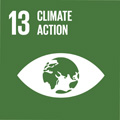- Docente: Beatrice Borghi
- Credits: 8
- SSD: M-STO/01
- Language: Italian
- Teaching Mode: Traditional lectures
- Campus: Bologna
- Corso: Single cycle degree programme (LMCU) in Primary teacher education (cod. 8540)
Learning outcomes
After completing the course the student knows the theories and hypotheses about periodization of ancient times and the Middle Ages; knows the elements of continuity and rupture that characterize the periodization (nomadic and sedentary, the great outcomes of the ancient and medieval civilizations, their imprints and legacies in the contemporary world); the ability to identify and expose characters and indicators of the cultures that have occurred over the millennia between the early history and the modern age; knows how to prepare research using sources and bibliographies; knows the general knowledge and analytical on the conduct of evolution, phenomena and events for the periods covered in the course; and how to manage skills and knowledge to develop written and work on general and specific topics.
Course contents
Contents Part I: epistemology and didactics
Introduction
History and Historiography
The sources in history, between research and teaching
The rhythms of history
Epistemology, methodology and teaching: teaching and learning of history
Teaching the active citizenship
Heritage educational
The civilizational frameworks and community maps
History manuals
Public history
About of the meaning of the Middle Ages
The origins of the Middle Ages
The Middle Ages: an age between renegade persistent prejudice, stereotyping and ambiguity
The Middle Ages and today its rediscovery
Part II: the major outcomes of the ancient and medieval history
The meeting between the nomad world and the sedentary world
The Roman Empire
Matrices, conflicts and legacies of a multiethnic middle ages
Between sedentary and mobility: the encounter with each other and points of view
Germanic invasion
Between East and West: the three monotheistic religions
The formation of medieval civilization
Travel, pilgrimages and crusades in the Mediterranean area
Municipal formations
Readings/Bibliography
For students attending
In addition to the notes of the lessons, students will be prepared on the following books:
- B. Borghi, La Storia. Indagare Apprendere Comunicare, Pàtron, Bologna 2016.
- R. Dondarini, Luce sui secoli bui. L'insegnamento della storia medievale. Questioni preliminari di metodo, Pàtron Editore, Bologna 2017.
- Educare alla cittadinanza attiva, monografico della rivista «Infanzia», luglio-ottobre, Spaggiari edizioni, Bergamo 2014.
In addition to the materials that will be provided at lesson (ancien and medieval history).
For students not attending
In addition to the books above nominaded (Borghi, Dondarini), students will prepare:
- R. Dondarini, Quel tempo chiamato medioevo, Liguori, Napoli 2010 (Chapters: IV, V, VI, VII, IX, X, XI, XII, XIV, XV)
and one a text chosen among the following:
- Il faro dell'umanità. Jacques Le Goff e la storia, a cura di B. Borghi, Pàtron editore 2016.
- G. Di Caro, La storia in laboratorio, Carocci Faber, Roma 2005.
- H. Girardet, Vedere, toccare, ascoltare. L'insegnamento della storia attraverso le fonti, Carrocci Faber, Roma 2004.
- L. Landi, Insegnare la storia ai bambini, Carocci, Roma 2007.
- Un patrimonio di esperienze per la didattica del patrimonio, a cura di B. Borghi, Pàtron, Bologna 2007.
For students of Didactic of History (3 cfu)
- B. Borghi, La Storia. Indagare Apprendere Comunicare, Pàtron, Bologna 2016.
- H. Girardet, Vedere, toccare, ascoltare. L'insegnamento della storia attraverso le fonti, Carrocci Faber, Roma 2004.
Teaching methods
The lectures will be supported by reading and commenting sources.There will be presented laboratories of history and activities conducted in the contexts of primary and secondary schools. Activities to promote active participation of students.
Assessment methods
ONLY FOR STUDENTS OF THE LAST YEARS OF THE COURSE IN "SPF"
The examination is carried out through a oral test with open-ended questions, with a grade out of 30, aimed at verifying the student's knowledge of the topics discussed in class and the materials available online (epistemology, didactic of history, ancient and medieval history). Among the indicators that will contribute to the evaluation there are the language appropriateness is foremost as well as the ability and to propose activities to teach history and heritage to pre-school and and primary school children.
It is necessary to sing up on Almaesami.
Teaching tools
Face-to-face lessons supported by performances in power point, video, documentaries, articles, essays, visits to the city.
Links to further information
http://www.festadellastoria.unibo.it ; www.dipast.unibo.it
Office hours
See the website of Beatrice Borghi
SDGs


This teaching activity contributes to the achievement of the Sustainable Development Goals of the UN 2030 Agenda.
